The color of a diamond refers to the tone and saturation of color, or the depth of color in a diamond.
The color of a diamond can range from colorless to a yellow or a faint brownish colored hue. Colorless diamonds are rarer and more valuable because they appear whiter and brighter.
The Color Grade Scale Chart separates diamond color into 22 grades from letter grade D through letter grade Z. Diamonds that are graded from D through J are best suited for jewelry because they look colorless or nearly colorless.
The scale starts a the letter “D” (the best) and goes to “Z”( the least desirable):

The color of the stone also affects the “fire” of the stone. The more color the diamond has, the less sparkle or fire it will produce. Most diamonds have a hint of yellow or brown as stated above. The rarest and most expensive are D or Icy white – on a scale that goes to Z and is yellowish (or brownish). (More color than Z is graded as a ‘fancy’ color).
Below 1ct, about 50 % of people can tell the difference between D and H colored diamonds. At I and lower, most people can see the faint tint of yellow.
However, with diamonds over 5 carat, is easier to pick G from D, and prices reflect that. With an 8 carat diamond ring, the price difference between a G color diamond and a D can be significant, even if all of the other quality factors are the same.
Color also has more influence on prices in higher clarity grades. Normally color is graded by placing diamonds face down and comparing them to color master stones with special lighting.
Glassy looking cuts like Asscher and Emerald cut diamonds show more color than ideal cut rounds. It is easier to see the color of a diamond in a white setting (platinum or white gold). If you have a yellowish diamond, then setting it in a rubbed over bezel style setting can improve the apparent color by a couple of grades. Some people just prefer warmer colors (J-L) while others want to save money, get a bigger diamond or a better cut.
As with all the 4C’s, color is a subject of preferences which can depend on cultural, social, or national background. Some nations prefer a higher clarity and are prepared to sacrifice color for “purity.”
Fluorescent diamonds with a bluish tint (about 30% of diamonds) usually appear more colorless.
To the degree to which a diamond appears colorless is graded on a scale established by the Gemmological Institute of America (GIA) which ranges from D (colorless) to Z (strong yellow or brown). Whilst completely colorless diamonds graded D, E or F are treasured for their rarity and are highly valued, the near colorless grades G, H or I are also considered “white” but are more affordable.
An important factor to consider when selecting color is the type of setting you plan on using. If you plan on mounting the stone in a Platinum or White Gold setting, consider a diamond in the D-G range. Yellow Gold will be more forgiving to a less than colorless stone, but regardless of the setting, the diamond will start to appear yellow if the color grade is lower than about J.
Diamonds can also be found in colors like pink, champagne, cognac, blue, and black. These colors are referred to as “fancy colors” and are evaluated by a different set of color standards. A diamond’s color grade refers to the lack of color. In other words, diamonds that are white, containing little or no color, receive higher quality grades than those with visible color.

